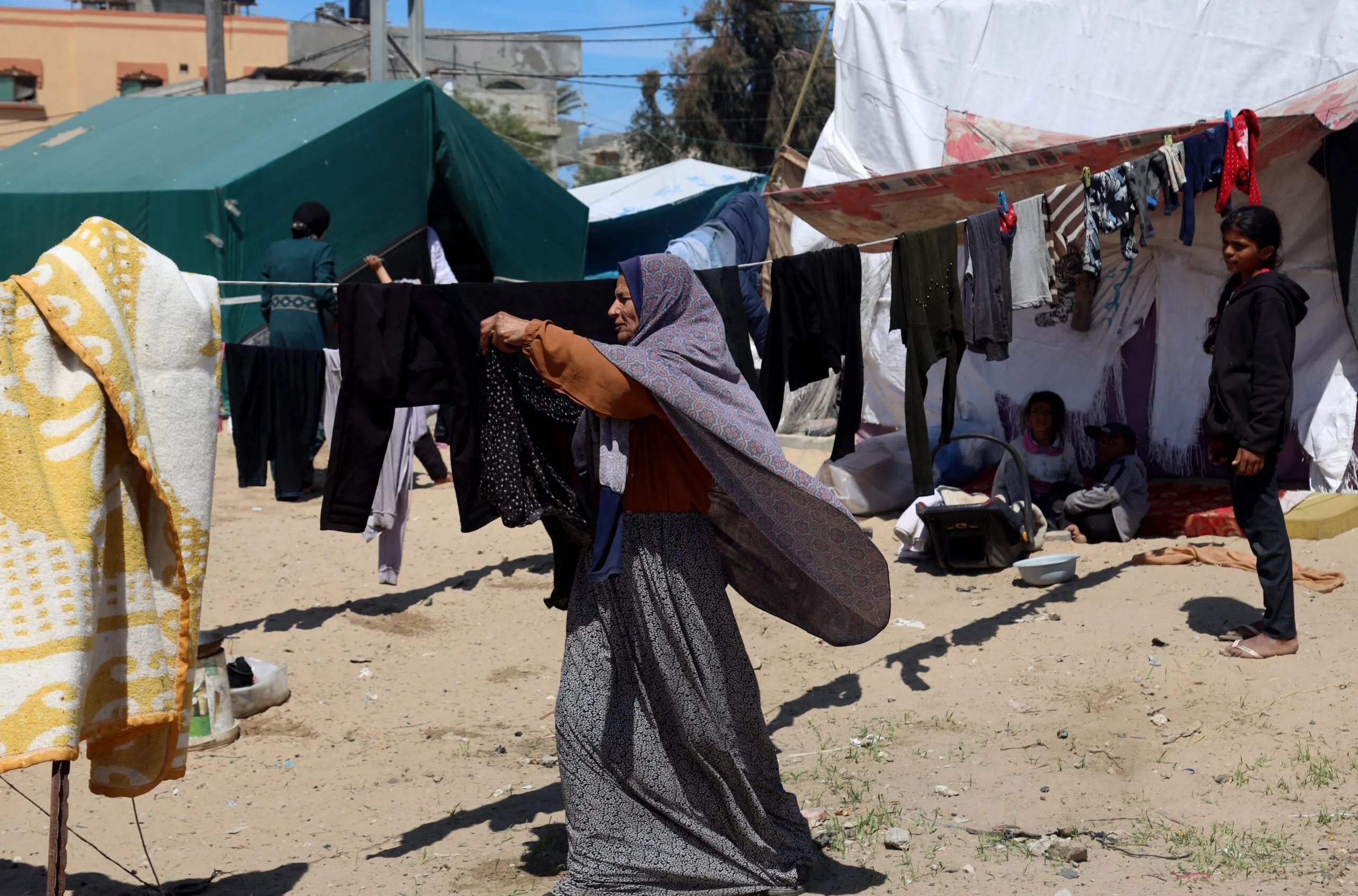April 4, 2024– Six months since the devastating conflict in Gaza started, CARE is gravely concerned about increasing deaths from illness, injuries, and hunger, with young children, pregnant women, and the elderly particularly at risk. Data from CARE’s partner organization Juzoor shows that communicable diseases including respiratory infections and diarrhoea are rapidly rising, especially among children under the age of five. Over 586,000 cases of acute respiratory infections and over 220,000 cases of diarrhoea have been reported since October, in addition to a high prevalence of scabies, skin rashes and Hepatitis A.
“People’s lives are hanging by a thread. Children, mothers, and the elderly are dying from diseases that are absolutely preventable and treatable. Families who have survived the bombings are scared diseases will become even more of a danger to their children’s lives than the missiles,” says Hiba Tibi, CARE Country Director for Westbank and Gaza.
This coming Sunday, April 7, will not only mark six months since the escalation of the conflict, but also marks World Health Day. In these past months, 1.9 million Palestinians in Gaza had to flee their homes and live in crowded conditions where basic sanitation has broken down, exacerbating the risks to the lives of those already most vulnerable. Most of the displaced have no access to safe water, while an average of 160 people share one toilet and 700 people one shower facility. The lack of clean water and sanitation facilities in makeshift, overcrowded shelters, in addition to a lack of food, sleep, and water, create fertile ground for the rapid spreading of diseases. Gazans now make up 80 percent of all people facing famine worldwide, leaving weakened and immunocompromised people with very little to fight infections.
“The sad irony is that while people need more health services due to injury and sickness, less health care is accessible to them. Medical support and supplies continue to be withheld and blockaded. It’s a vicious cycle that literally leaves people trapped sick and hungry in a death zone, leaving them to die a slow and painful death,” says Tibi.
Since October, over 100 health facilities were attacked, while humanitarian access is repeatedly hindered. Delivery of lifesaving medical and surgical supplies have been blocked, resulting in catastrophic conditions for patients and health care staff. Only 10 out of 36 hospitals are partially functioning, with an estimated average bed occupancy of 323%. Facilities lack basic medicines, anaesthesia, and equipment as well as sufficient water and electricity to run life-saving machines.
“We see tens of thousands of patients in the shelters we run in the North of Gaza every month. Children especially are getting sicker and weaker from the hunger and poor living conditions. Our colleagues are also massively affected. One of our doctors told me a few days ago that all he had eaten for weeks was dry and mouldy bread he found in deserted, damaged houses. Many of our doctors live in the same shelters they work in, have lost family members, and are themselves traumatized,” says Dr. Umaiyeh Khammash, Director of Juzoor, one of few organizations still working in North Gaza. “Doctors must amputate children’s limbs without anaesthesia, discharge mothers with complicated births within two hours after delivery and have up to seven premature babies share an incubator.”
In addition to acute injuries and communicable diseases, approximately 350,000 people in Gaza live with chronic diseases such as diabetes and kidney disease. The lack of medicine, clean water, and sufficient food means that people suffering from these illnesses have no way of treating or controlling their condition. Furthermore, over 5,000 people have become disabled since the start of the war, while over 80% of the 107,000 elderly Gazans require machines or treatment for chronic health conditions. The complete siege of the North impedes evacuations of critically sick and injured people, leaving them behind without treatment and at risk of facing further airstrikes. Assistive devices such as crutches, wheelchairs, and protheses have also often been left behind or were destroyed in aerial bombardments.
“The chronically ill are the hidden casualties of this war. We have fathers begging our doctors for cancer medication for their child, but this treatment is simply not available. As a doctor, there is nothing worse but having no choice to leave these children to their fate,” says Khammash.
The United Nations Security Council finally passed a resolution (UNSCR 2728) on March 25th demanding an immediate ceasefire for the month of Ramadan, the immediate and unconditional release of hostages, stressing the urgent need for humanitarian access and flow of aid. This resolution, though binding, is yet to be implemented. Civilians and aid workers continue to fall under the bombs, and famine is imminent with people already dying from malnutrition- predominantly children. The ceasefire must be respected and implemented now so that food, medicine, and other vital aid can reach exhausted Palestinians in Gaza, especially women and children. There is no time left. It is too late already for many. The international community must act swiftly to avert a deepening humanitarian catastrophe.
For media inquiries, please contact: usa.media@care.org.

